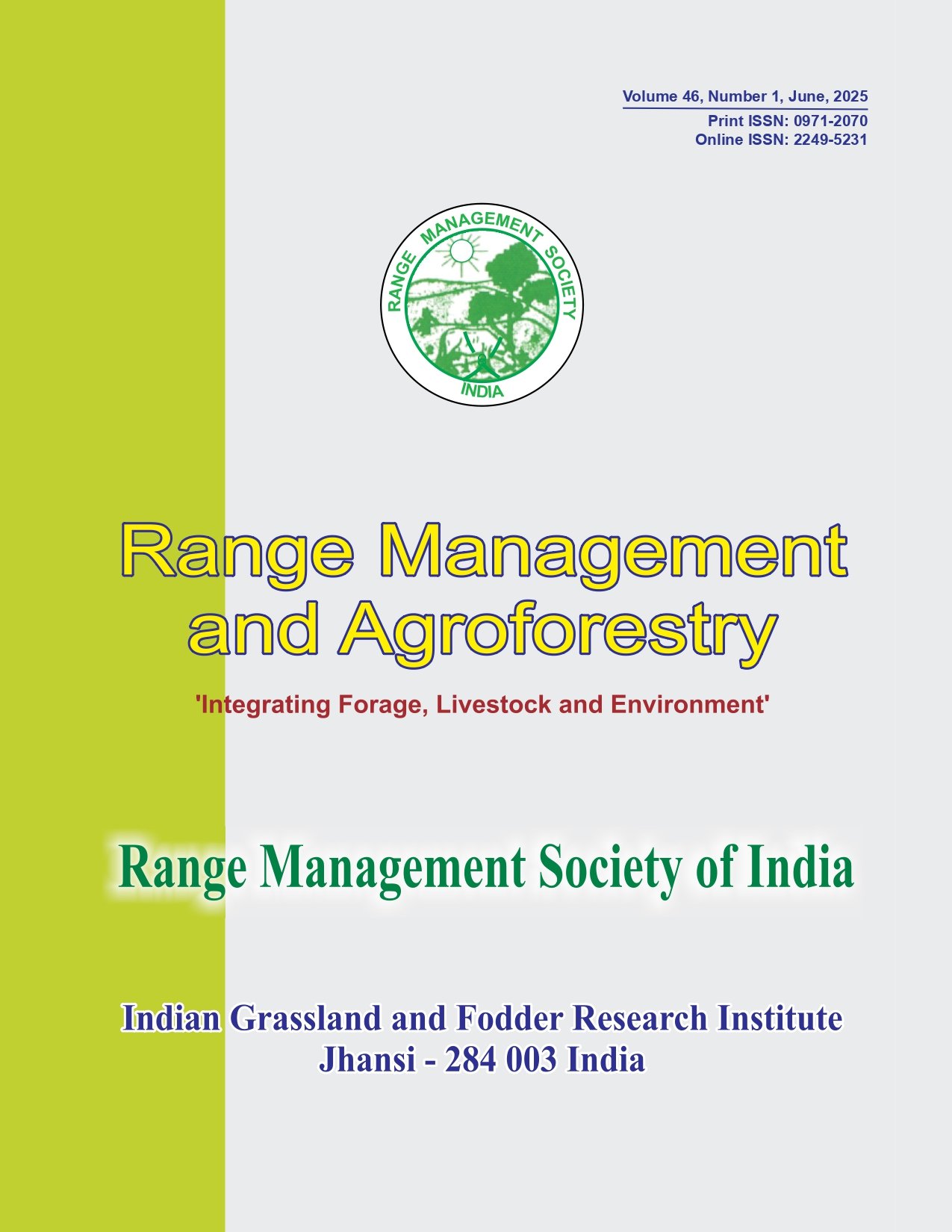Identifying drought-tolerant hybrids in pearl millet [Pennisetum glaucum (L.) R. Br.] using stress indices for arid and semi-arid areas
Keywords:
Biological yield, Drought, Dual-purpose hybrids, Grain yield, Stress indicesAbstract
The present experiment was conducted to identify F1 hybrids suitable for drought-affected areas in pearl millet on stress indices. Fifty F1 hybrids (which were developed at ICRISAT, Hyderabad during Summer, 2018) along with three standard checks were laid down in randomized block design with three replications in two different environments. Six stress indices viz., stress tolerance (TOL), stress susceptibility index (SSI), stress tolerance index (STI), mean productivity (MP), geometric mean productivity (GMP) and yield index (YI) were calculated to screen the hybrids for moisture stress tolerance based on grain as well as dry stover yield (biological yield) per plant. Pooled ANOVA showed that genotype, environment and genotype x environment interaction effects were highly significant for both the characters. Genotype effect was the most important source of grain as well as dry stover yield and accounted for 52.82% and 51.12%, respectively of the total sum of squares. Mean grain yield and dry stover yield per plant of hybrids decreased under stress environment. Based on grain yield, dry stover yield and stress indices, the hybrids viz., ICMA 843-22 x BIB343, ICMA 843-22 x BIB-423, RMS 7A x BIB-407, ICMA 843-22 x BIB-451 and ICMA 88004 x BIB-423 were identified as most tolerant for moisture stress conditions and recommended for drought affected areas. These hybrids can also be used for stress breeding as well as developing moisture stress tolerant populations.




